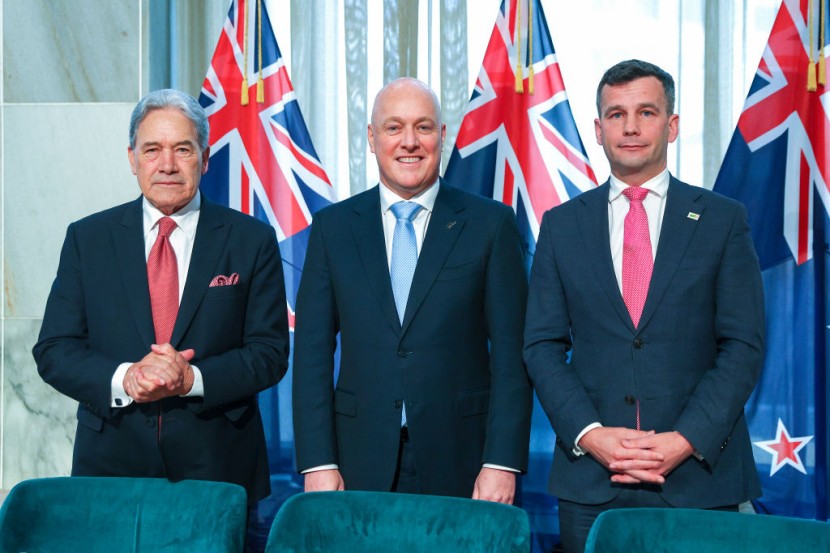New Zealand political leaders announced that they have reached an agreement to form the next government, following the general election held on October 14.
This announcement marks the end of nearly six weeks of negotiations and political uncertainty that had gripped the nation, as per ABC News.
New Zealand Party Leaders Agree on Coalition

The leaders of the three parties involved, Christopher Luxon of the conservative National Party, David Seymour of the libertarian ACT Party, and Winston Peters of the populist New Zealand First party, expressed their anticipation for a formal signing ceremony scheduled for Friday at Parliament.
While Christopher Luxon is set to become the next Prime Minister, the finer details of the government's policies and the allocation of key positions within the government have been under negotiation.
The election results had placed Luxon's National Party in the lead with 38% of the vote, making it the largest party in terms of proportion. However, the need to form alliances under New Zealand's proportional voting system required negotiations with the ACT Party and New Zealand First.
The initial election night count had shown a straightforward path for Luxon's National Party and ACT Party to form a coalition government. Still, the inclusion of special votes in the final count complicated matters and led to extensive three-way negotiations.
Outgoing Prime Minister Chris Hipkins, leader of the Labour Party, had already conceded on election night that he wouldn't work with Winston Peters, setting the stage for Luxon's rise to power.
Hipkins had taken over from Jacinda Ardern, who stepped down unexpectedly in January, citing her inability to do justice to the role. Ardern's initial landslide victory had given way to a decline in popularity as the country grappled with COVID-19 restrictions and rising inflation.
Christopher Luxon expressed his pride in the negotiations, emphasizing their comprehensiveness, and promised that the details of the agreement would be made public on Friday.
The three parties had entered the election campaign with differing stances on various issues, including tax, race relations, and economic management, according to Reuters.
Read Also : Mastermind of Hamas Attack Yahya Sinwar Remains Alive, Israeli Officials Vow to Kill Him
Policy Shift Under Luxon's Leadership
The formation of this new coalition government is expected to bring an end to the six-year reign of the left-wing government led by the Labour Party.
The National Party won over voters by pledging relief for middle-income New Zealanders, a commitment to control historically high inflation, and a plan to reduce the country's debt.
One notable policy announcement expected from the National Party is the return of the central bank to a single mandate, targeting inflation in the range of 1% to 3%.
New Zealand's mixed member proportional system traditionally necessitates coalition governments, and forming a government typically takes about a month, sometimes even longer.
However, the conclusion of negotiations and the imminent ratification of agreements by the involved parties signal that New Zealand is poised to move forward with its new government.
Details of the new government's policy agenda are eagerly awaited and are scheduled to be released on Friday, along with the announcement of ministerial appointments.
With these developments, New Zealand is taking a significant step toward charting its course for the next three years under the leadership of Prime Minister Christopher Luxon and his coalition partners, Toronto Star reported.
© 2025 HNGN, All rights reserved. Do not reproduce without permission.








